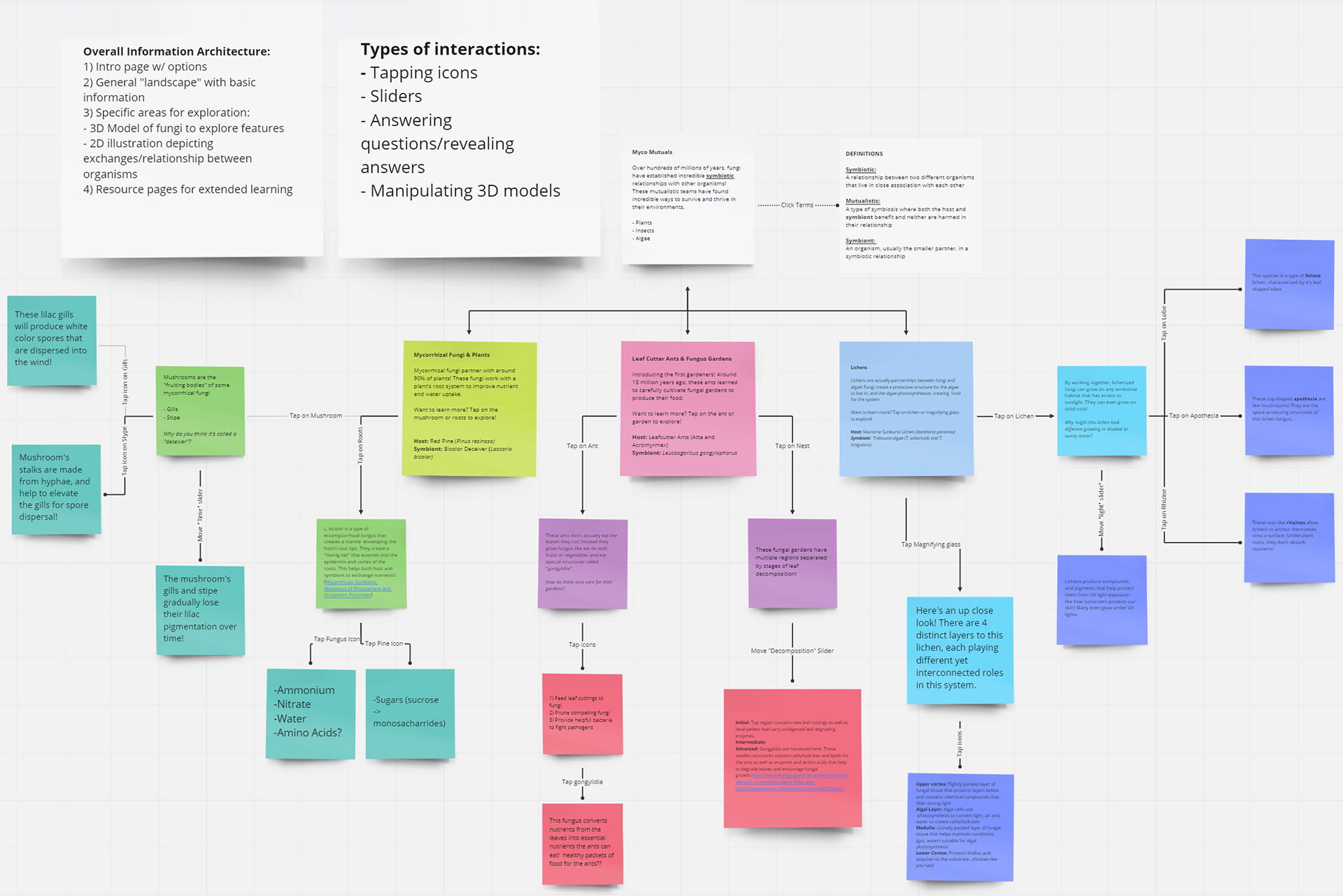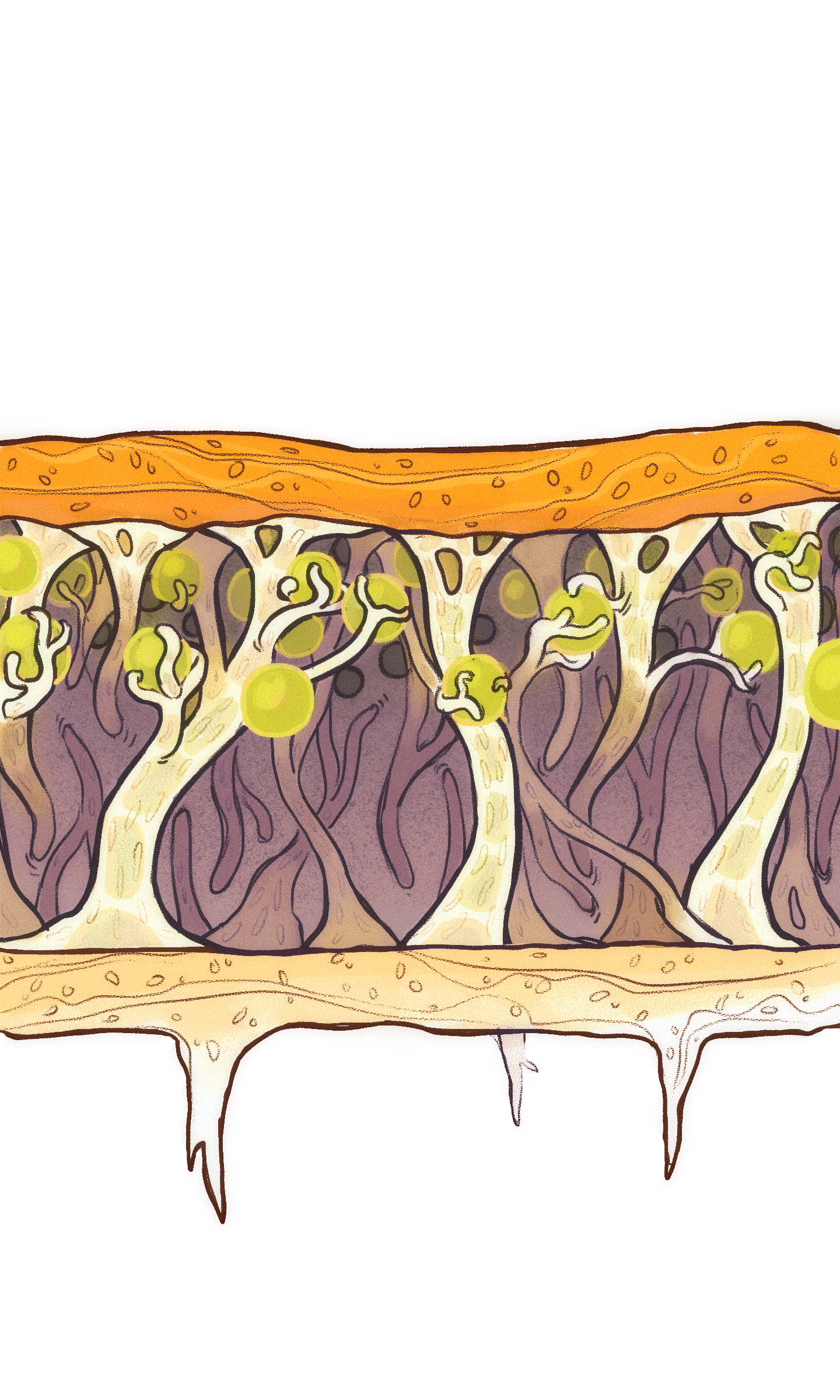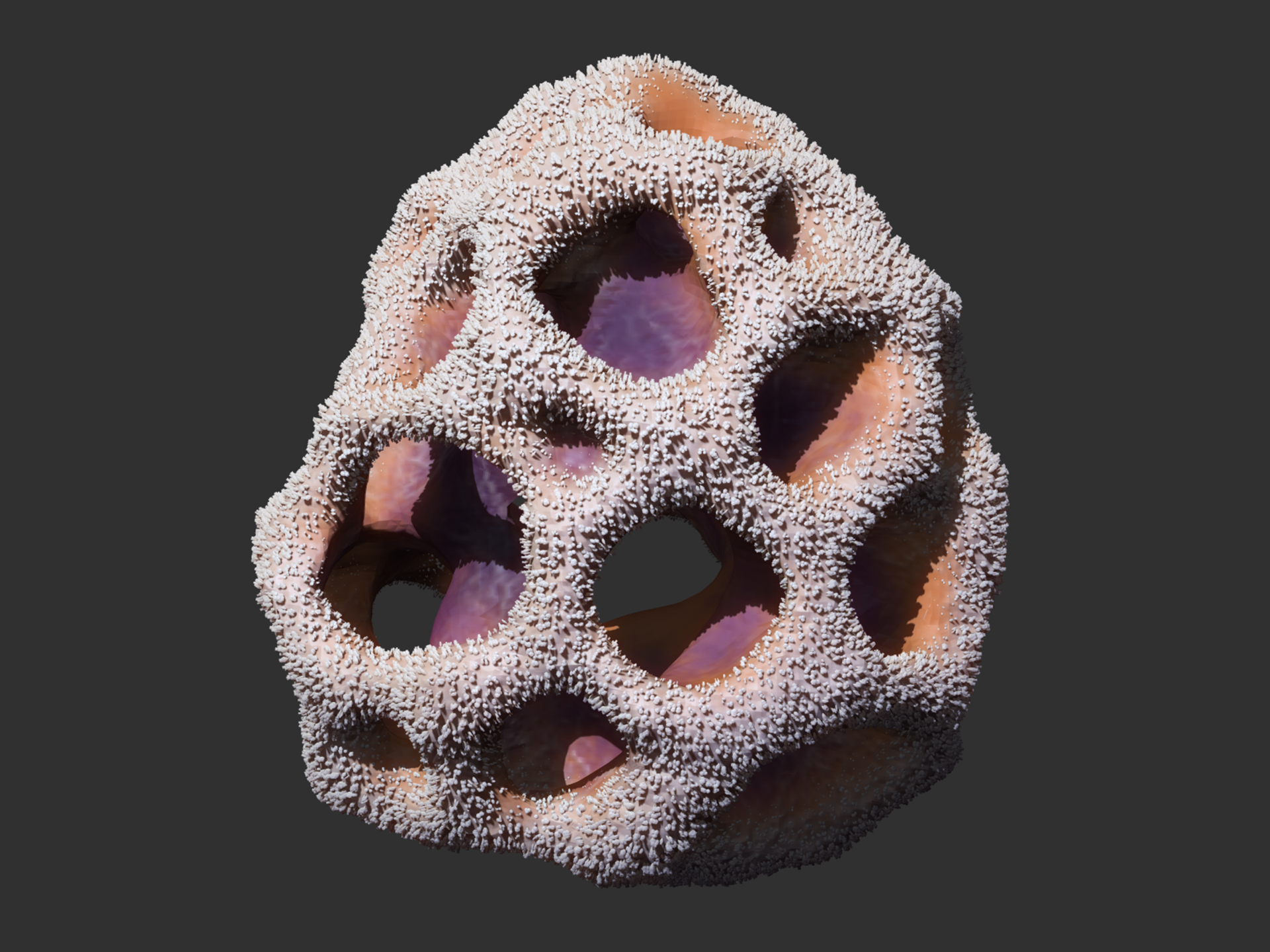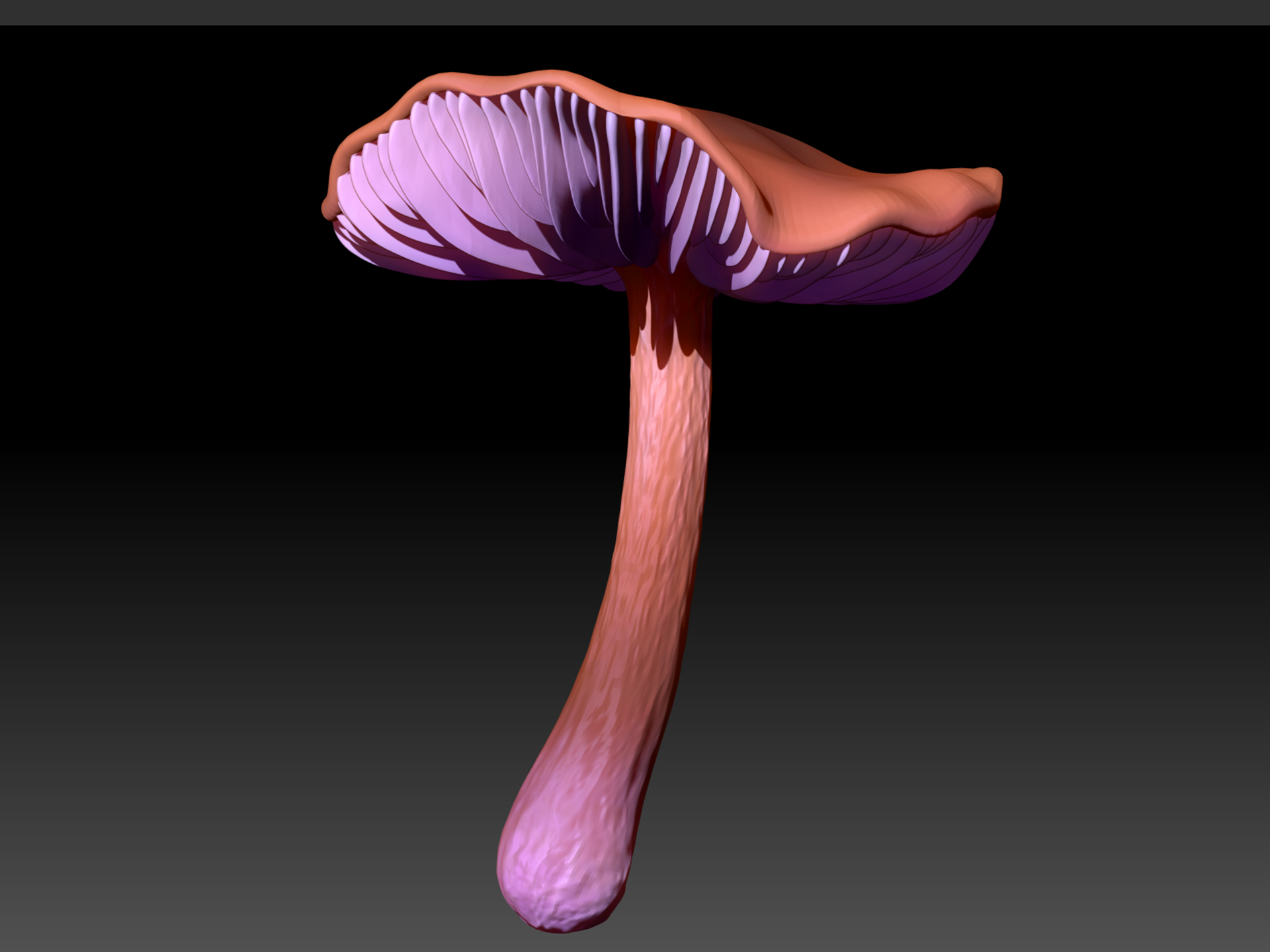Production of a Fully Mobile and Browser-Based Exhibit on Fungal Symbiosis
The Problem
Though Fungi make up their own kingdom alongside Plants and Animals, there are vast discrepancies in the quality and quantity of knowledge students are exposed to in typical k-12 education. Supplemental education on fungi, either through scientific outreach institutions or higher educational opportunities, are are few and far between. Additionally, mycophobia is a considerable barrier to the general public's familiarity and interest in fungi. Fungi are frequent antagonist forces in the horror genre, and the cumulated narratives around fungi understandably instill fear and avoidance. So how do we combat these narratives and bring fungi into the main stage in a more flattering light?
The Goal
Develop an educational experience that motivates users to learn more about fungi. Leverage educational theories to develop interesting and easy to digest information about fungi. Provide intrinsically motivating elements of design and content to capture audience curiosity and investment. Build to a platform that can be paired with outreach initiatives and available on typical mobile devices to broaden reach.
The Audience
Start with the curious! Museum educators and researchers are pillars of the scientific outreach community and often host presentations for organizations, schools, and within the walls of museums for event nights.
I spoke with exhibition designers, project managers, and content experts at the Field Museum to gather information on the needs of typical museum audiences. I received key insights on trends obtained by visitor services on how audiences of different age groups engage with museum exhibits-- what they look for first, what excites them, and how they engage with exhibits.
Production Overview
Develop Experience Flowchart & Interactive Framework for the educational content of the exhibit
Create Low-Fidelity Wireframes to establish layout and basic mobile interactivity
Design Visual Assets for UI elements, animations, and 3D models within exhibit
Program Unity 3D Prototype that integrates all assets and interactive functionalities
Publish Final Prototype to itch.io for browser-based access
User Experience (UX Design)
Pre-production concept mapping to isolate key learning moments, informational hierarchy, and establish interaction points of the exhibit.


User Interface (UI) Design
Development of Low Fidelity Wireframes in Adobe XD and major UI elements.
UI Layout & Guidelines
Asset Development
Illustrated Backgrounds made in Procreate






3D Fungi Models made in Zbrush



Select Animated UI Elements made in Illustrator & After Effects





Unity Prototype Development
Utilized Unity's event system to toggle UI and scene transitions. Implemented Lean Touch capabilities for 3D asset manipulation.
Visual Mock-Up made in Illustrator
High Fidelity Prototype built in Unity 3D and published for WebGL 2.0
Final Research Defense presentation slides
